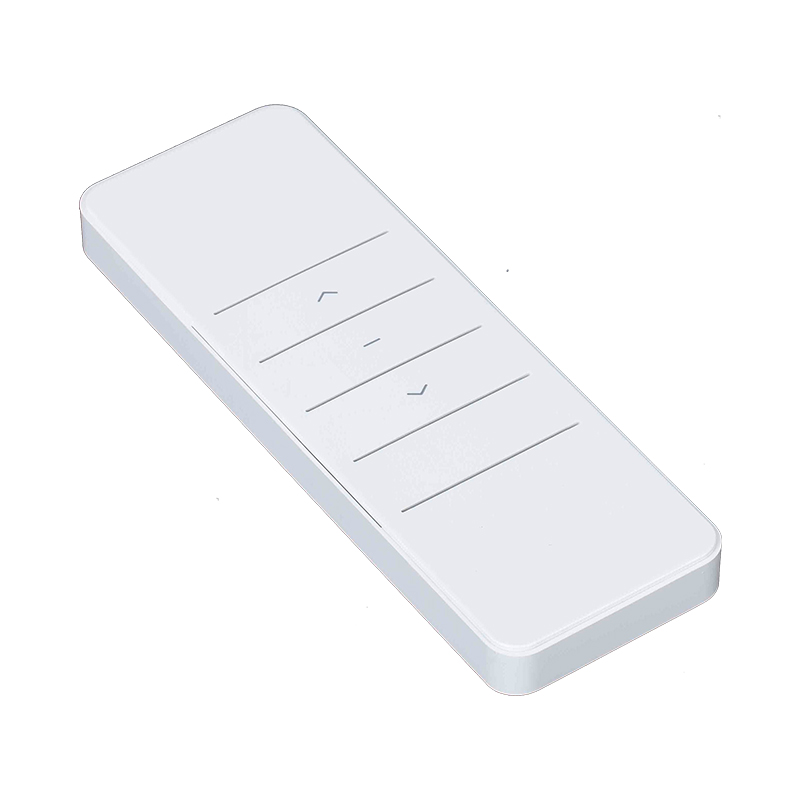Tubular Motor Controllers: The Key to Smooth and Efficient Automation
2025-04-29
In today’s world of home and commercial automation, a smooth and reliable operation is paramount. From window blinds to roller shutters, automation has made daily tasks more convenient, and one key component in this automation is the tubular motor controller.

But what exactly is a tubular motor controller, and why is it so crucial in modern automation systems? In this article, we'll dive into the details of tubular motor controllers, how they work, and why they are essential for efficient and long-lasting operation.
What is a Tubular Motor?
Before we dive into the controller itself, it’s important to understand what a tubular motor is. A tubular motor is a type of electric motor that is designed to fit inside a hollow tube. This design makes it ideal for applications like window blinds, rolling shutters, and awnings, where the motor needs to be compact and discreet.
These motors are commonly used in both residential and commercial spaces for automated control of blinds, curtains, shutters, and other similar systems. The beauty of tubular motors lies in their ability to fit inside the roller tube, making them invisible when installed and minimizing the need for additional space.
What is a Tubular Motor Controller?
A tubular motor controller is the device that controls the operation of the tubular motor. It acts as the “brain” of the motor system, managing its movement and ensuring that the motor operates smoothly, safely, and efficiently.
The controller connects to the motor and typically includes features like:
- Start/Stop control: It provides the ability to start and stop the motor at will.
- Speed control: Some tubular motor controllers allow the user to adjust the speed at which the motor operates.
- Position control: This feature helps the motor reach the desired position and stop at a specific point, which is especially useful for systems like blinds and curtains that need to be set at precise positions.
- Safety features: Many controllers include overheat protection, overload protection, and limit switches that prevent the motor from running out of control.
How Does a Tubular Motor Controller Work?
The tubular motor controller works by sending electrical signals to the motor, which in turn powers the motor to move. These controllers are typically AC or DC-powered and are designed to provide a stable and consistent flow of power to the motor.
Here’s a simple breakdown of how the process works:
1. User Input: The user sends a command to the controller, usually via a wall switch, remote control, or smartphone app. For example, the user might press a button to raise or lower the blinds.
2. Signal Transmission: The controller interprets the user’s command and sends the appropriate signal to the tubular motor.
3. Motor Activation: The motor receives the signal and starts rotating the tube in the desired direction.
4. Feedback and Adjustment: Depending on the system, feedback sensors may communicate back to the controller to indicate when the motor has reached its desired position (e.g., fully open or fully closed). The controller will then stop the motor.
5. Safety Shutdown: If the motor encounters an obstruction or if there’s an overload, the controller will automatically shut off the motor to prevent damage.
Features of a Tubular Motor Controller
1. Limit Switch Functionality
Tubular motor controllers often come with built-in limit switches. These switches are set to stop the motor when it reaches the end of its travel path. For example, when a window blind reaches its fully raised or lowered position, the limit switch will cut off the power, preventing the motor from overworking.
2. Multiple Control Options
A modern tubular motor controller can be controlled in various ways. This includes:
- Wired controls: Traditional wall-mounted switches.
- Wireless controls: Remote controls, which offer convenience from a distance.
- Smart control: Integration with home automation systems or mobile apps, allowing users to control the motor from their smartphones or voice assistants.
3. Overload Protection
Overloading a motor can cause permanent damage. Tubular motor controllers often include overload protection features that detect excess power consumption and automatically shut the motor off to prevent overheating and damage.
4. Soft Start/Stop
Some tubular motor controllers feature soft start/stop capabilities, which ensure that the motor gradually accelerates and decelerates, avoiding sudden jerks or strains on the system. This feature extends the life of the motor and reduces noise during operation.
5. Timer Functionality
Many controllers offer timer functionality, allowing users to program their motors to operate at specific times. For example, you can set your blinds to automatically lower in the evening to block out the sun and rise in the morning to let in natural light.
6. Solar Power Compatibility
Some tubular motor controllers are designed to work with solar-powered motors, making them ideal for eco-friendly applications where sustainability is a priority.
Applications of Tubular Motor Controllers
Tubular motor controllers are used in various applications, including:
- Window Blinds and Shades: Tubular motors are commonly used in automated window coverings, allowing users to easily adjust the height or angle of blinds with the press of a button or voice command.
- Rolling Shutters: In both commercial and residential settings, tubular motor controllers are used for automatic rolling shutters that provide security and privacy.
- Awnings: Tubular motors with controllers allow awnings to extend and retract automatically, providing convenience and protection from the sun.
- Garage Doors: Tubular motor controllers are also used in automatic garage door systems, ensuring smooth operation and enhanced security.
Why Are Tubular Motor Controllers Important?
1. Convenience
Tubular motor controllers offer an unmatched level of convenience by automating simple tasks like adjusting blinds, shutters, or awnings. With the ability to control these systems remotely or through automation, it makes life easier for homeowners and businesses.
2. Energy Efficiency
Many modern tubular motor controllers are designed to optimize energy consumption. By ensuring that the motors only run when needed and by offering features like timers and soft start/stop, they help conserve energy, reducing costs.
3. Safety
With built-in safety features like overload protection and limit switches, tubular motor controllers ensure that the motor and system are protected from damage. They also reduce the risk of accidents caused by mechanical failure or malfunction.
4. Long-Lasting Performance
The right tubular motor controller helps maintain the long-term health of your motor system. By providing smooth and controlled operation, it reduces wear and tear, extending the lifespan of the motor and other components.
Conclusion
In the world of home and commercial automation, tubular motor controllers are essential for ensuring the smooth and efficient operation of various systems, from blinds and awnings to rolling shutters and garage doors. With their ability to offer precise control, enhanced safety features, and energy efficiency, these controllers play a critical role in modern automation.
Whether you're looking to automate your home or upgrade your existing systems, investing in a high-quality tubular motor controller is a smart choice for improved convenience, performance, and longevity.


